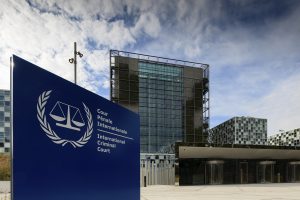With the emergence of memory as a key concern in Western societies and the acceleration of memory discourses in the West, oral histories of Partition 1947 compiled by feminist scholars in the 1990s triggered a surfeit of survivor memories spawning an insatiable Partition industry and hence a new commemoration industry converging on projects of archiving, musealising and monumentalising Partitioned memories has burgeoned even as the last generation of Partition survivors is on the brink of disappearing.
The conspiracy of silence maintained by Partition survivors for several decades foregrounds the issue of revisionist histories’ recourse to local memory practices for documenting historical events.
In contrast to Holocaust survivors’ obsession with memorialising and musealising, Partition survivors’ suspicion of memorialising appears to emanate from both a desire for forgetting and scepticism about the power of language to be able to capture the experience of Partition.
Advertisement
Unlike survivors, historians’, including oral historians’ attempt to recover, archive and explain Partition appears to break the pact of secrecy that has strictly forbidden survivors from sharing secrets, especially painful ones, other than in the intimate space of the family.
While shame, trauma, patriarchy, inarticulateness and protective concern have been recognised as possible explanations for survivors’ concealment of Partition traumas, the difference in remembering, memory and forgetting in archival, oral and survivor accounts of the event has not been engaged with in sufficient depth.
The present book under review focuses on the ethics and aesthetics of remembrance by posing certain fundamental questions. What good is the memory archive in view of memory being fallible, selective, affective, intuitive and corporeal? How can it deliver what history alone no longer seems to offer? In view of doubts raised by the unreliability of memory and factual accuracy of oral storytelling, why are stories being increasingly used to reconstruct histories of Partition? How do we carry the stories of survivors forward without appropriating them? What is at stake in the stories? Why do we need to circulate stories that were intended to be shared in the intimate embodied space of the family? Drawing on recent debates in history, memory and trauma, the book tries to uncover the afterlife of the Partition of 1947.
Through examining the stories of both adult survivors and those who were children at the time of Partition and grew up listening to Partition, it implicates the process of memory and postmemory (a notion borrowed from Marianne Hirsch) in the silence and remembering of Partition. In documenting their narratives, it calls attention to the process through which survivors and their children script and emplot their life-stories to rewrite tragic tales of hapless and abjected victims of violence poignantly documented in oral histories of Partition as triumphalist sagas of fortitude, resilience, struggle, industry, enterprise and success.
At the same time, it reveals the silences, stutters and stammers that interrupt these heroic sagas to bring to light the untold stories of traumatic experiences repressed in the consensual narratives of survivors and their families.
The book deconstructs the narratives of predominantly middle class, upperclass Hindu and Sikh survivors displaced by the Partition-in-thewest and forced to resettle in different parts of India to trace the traumatising effects of both the tangible and intangible violence of Partition in their struggle to make new homes and lives in strange, unhomely lands and transform themselves from refugees to citizens.
Memory histories bring a close focus on Partition’s impact on the lives of specific individuals in particular localities and neighbourhoods whose shared experiences either reconstruct collective memories or interrupt one another to put together discordant versions of the same event. Although the Punjab model has been modified through the experience in the east, the multiplicity of memories that have emerged in the last three decades impel that memories of Partition need to be differentiated further.
The myth of Partition-in-the-west as a one-time exchange of populations has been refuted by the continuing influx of migrants from Sindh and the presence of Hindus and Sikhs in Pakistan and Afghanistan.
Thus, the clubbing of Hindus and Sikhs as victims of Muslim violence in Partition literature needs further unpacking since they emerge from divergent historical pasts and collective interpretations of the past.
Thus this book hopes to correct the common understanding of Punjabi refugees receiving a preferential treatment from the post-colonial Indian state through being rehabilitated in Punjab and areas surrounding Delhi by charting the tortuous itineraries of those who were forced to resettle in parts of Himachal Pradesh, Haryana, Uttar Pradesh, Bihar, Jharkhand, Madhya Pradesh and even in the deep south by drawing on state as well as filial networks.
Through reconstructing these microhistories, it hopes to show that Partitionin-the-west, as in the east, was not one uniform experience shared by all those who crossed the border from the west but varied according to gender, class, caste, ethnicity, region, education, profession, mode of transport and place of settlement. The nostalgia for a forgotten city is mirrored in the use of old place names may also be viewed by Partition survivors to orient themselves in an alien environment by locating their origins in specific ethno-spatial or ethno-linguistic regions characterised by particularised speech patterns, cuisine, attire, rituals and everyday practices.
Observers have been simultaneously fascinated and repelled by the ghetto-like ambience of these refugee enclaves inhabited by groups whose identification with the cultures of small places in Punjab spawn distinctive cultures that refute the myth of a unified Punjabi refugee culture as posited in refugee studies.
Through the performance of the collective memories of these small places, Partition survivors attempt to resettle in an unfamiliar home. Shilpi Gulati’s oral interviews with members of the Derawal community in Delhi brings to light the feeble attempt of a community hailing from the Derajat region, comprising Dera Ismail Khan and Dera Ghazi Khan to resist being engulfed by the dominant Punjabi refugee narrative of Delhi.
It does so through the retention of Siraiki language, inferioritised as a rustic dialect of Punjabi by the British, Derawal biradrisand celebrations of small functions on certain festive days. Likewise, migrants from Mianwali congregated to form the Mianwali Nagar.
The new mohallas created by refugee colonies were affectionate albeit claustrophobic enclaves where transparent living was the norm and anybody’s business was everyone’s business. While memories of specific regional homes continued to be performed in the inner spaces of the house, they were re-inscribed with the rhythms of a remembered Punjabi mohalla in the outer space of the street and the neighbourhood, albeit underwritten by the tragic memories of Partition. Home is reconstructed either as language, as culture, as forms of sociality or rituals and as everyday practices.
The Punjabi concept of the sanjha chulhawas firmly entrenched in the Sikh institution of a casteless society. Yet at the same time it is interesting to note that even seven decades after Partition, the old residents of Lajpat Nagar, in which refugees camped in Purana Qila were allotted plots, continue to identify themselves as Lahorian, Pindwaal, Multani, Sindhi or Jhangi. To conclude it is needless to state that this serious and dense text not only adds to the already impressive titles in the series of “Routledge Studies in South Asian History” but also clarifies the wrong impression of the lay reader that partition of the west and partition of the east are two separate homogenous wholes to be studied on their own.
By recovering the lost stories of ordinary people displaced by the violence of 1947, they have filled up important lacunae in the official histories of Independence and put together an alternate history of the events of 1947.
It juxtaposes fictional representations against testimonial accounts and historical documents to foreground the intersections between memory, history and narrative. Aggressive subjectivity may also be defined as the subject position carved by the refugee through “disidentification” with compassionate or controlling “refugeeness” and self-identification as a right-bearing citizen of the Indian state. Rather than ancestral wealth, property or lineage, individual competencies for survival came to be valourised as essential to self-definition.
The reviewer is retired Professor of English, Visva-Bharati University.
Advertisement












